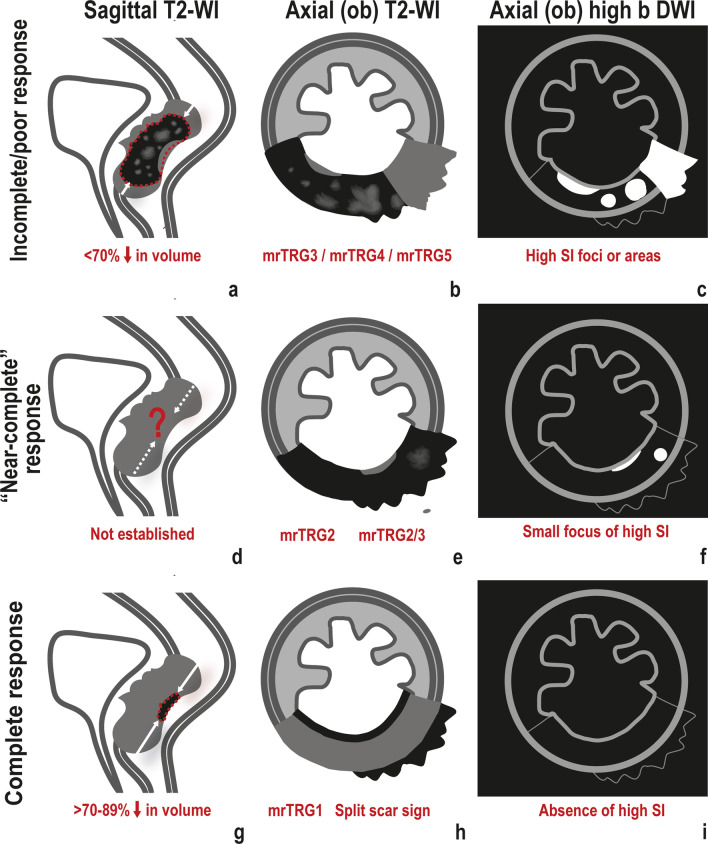Fig. 1.
Primary tumour response. An incomplete/poor response to NAT may be characterised by (a) little reduction in tumour volume, < 70%. b mrTRG3 or higher, translating into the presence of residual intermediate “tumour” signal intensity on T2-WI; c Residual high signal intensity at tumour bed on DWI. “Near-complete” responses fall on the good response group and as such, a large reduction in tumour volume may be expected but a cutoff is not established (d). e On T2-WI, mrTRG2—scar with “dense fibrosis”—and mrTRG2/3, in which a tiny focus of residual intermediate signal may still be visible, are included; f Also, a small residual focus of high signal intensity on high b-value DWI may be admitted. Complete responses are characterised by a very large reduction in tumour size, > 70–89% (g). h on T2-WI, they may present as mrTRG1, characterised by the presence of a linear/crescenteric 1–2 mm hypointense scar at the endoluminal aspect of the tumour bed or normalisation of the rectal wall; they may also present with a positive split scar sign, which includes mrTRG1s and scars with an additional peri-rectal, usually irregular, layer of hypointense tissue, separated from the inner linear hypointense linear/crescentic scar by an intermediate signal intensity thickened and partially fibrotic muscularis propria; i No high signal intensity at tumour bed on DWI is expected

